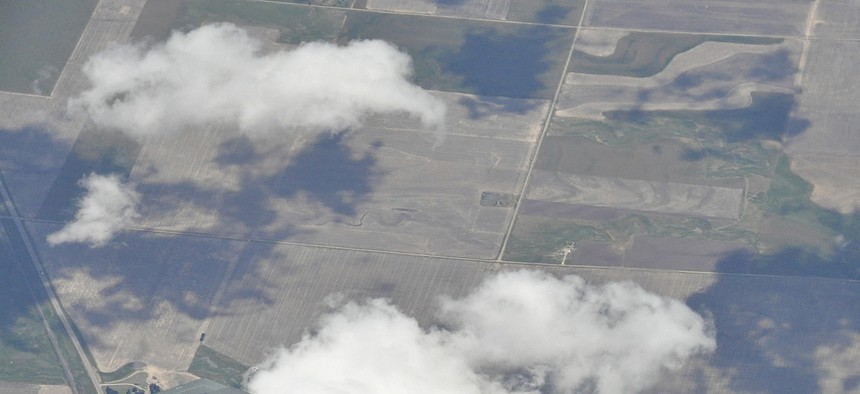
An Air Force B-2 bomber descends after succesfully refueling with a KC-135 tanker, on May 9, 2012. U.S. Air Force photo by Staff Sgt Jeremy M. Wilson
The Air Force May Have Already Developed Its New Long-Range Bomber
A recent report to Congress suggests the Pentagon's replacement for its aging bomber fleet is all but ready for production. By Bob Brewin
While the Air Force is expected to soon issue a request for proposals for its long-range strike bomber, a July 2 Congressional Research Service report made public Tuesday suggests that the service has already developed the aircraft through its classified budget.
The CRS report, obtained and posted online by Steven Aftergood, director of the Federation of American Scientists’ Project on Government Secrecy, said the projected Air Force budget for the Long Range Strike Bomber jumps more than tenfold, from $258.7 million in 2013 to $3.5 billion in 2019, indicating the program may already be headed for production.
“Aviation analysts and industry officials confirm CRS's assessment that this funding stream resembles a production program more than a typical development profile. This may indicate that significant LRS-B development has already been completed, presumably in classified budgets,” the report said.
If that’s the case, CRS said, “the Air Force will be challenged to construct a truly competitive RFP.” Northrop Grumman and a Lockheed Martin-Boeing team both have said they plan to bid on the new aircraft.
The CRS report also indicated the new bomber may not even be a single aircraft, but is perhaps several aircraft working together. “Although long-range strike systems are typically thought of as bomber aircraft, the more general description is used because it is not yet clear whether the proposed Long Range Strike Bomber (LRS-B) is to be a single platform or a group of smaller systems working in concert,” CRS reported.
In June, another CRS report described the current bomber fleet as “increasingly irrelevant” and said that only the B-2 could penetrate enemy air defenses.
The current U.S. bomber fleet consists of 76 B-52 aircraft with an average age of 50 years, 63 30-year old B-1 bombers and 20 25-year-old B-2s. “The B-52s and B-1s are currently projected to remain in service through 2040, which would be consistent with a mid-2020s introduction of the first LRS-Bs,” CRS said.
The Air Force plans to buy between 80 and 100 new bombers at a projected cost of $550 million each, or just over one quarter of the cost of the B-2, with each aircraft carrying a $2 billion price tag. CRS said some analysts speculate that the cost of each new bomber could jump to $810 million, or $81 billion total for a 100-plane fleet.
